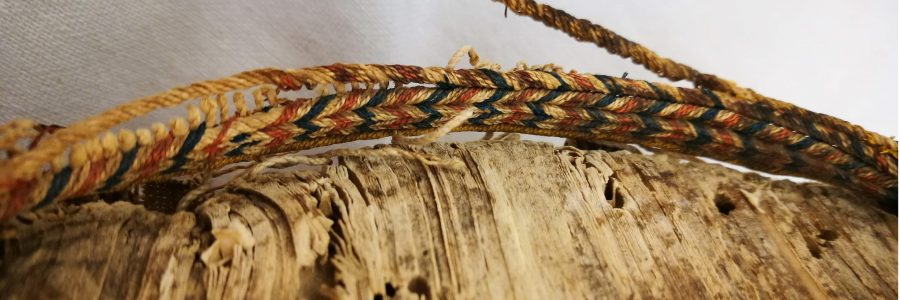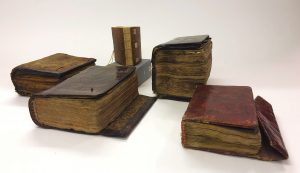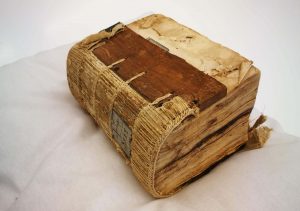
Bookbinding Structures of the Eastern Mediterranean
by Shaun Thompson
(click on images to enlarge them)
I have recently returned from a fantastic professional development opportunity which was made possible by a generous donation from the Friends of the Library. I attended a course on Identifying and Recording Bookbinding Structures of the Eastern Mediterranean, as part of the 2018 Ligatus Summer School, hosted by the National Library of Greece in Athens.
The two-course tutors were Dr Georgios Boudalis and Dr Athanasios Velios. Georgios has amassed a vast knowledge of bookbinding structures from the Eastern Mediterranean, during his career as a book conservator. Athanasios was trained as a conservator and has worked in the field of museum documentation with a particular interest in conservation documentation for the last 15 years. Both were part of the St. Catherine’s Project and developed a workflow for surveying library collections.

Image 3. Structural features of Byzantine bindings (L-R) Double loop stitch, tri-plaited tails, board edge pin, tri-plaited strap fastening
This course was divided into two interconnected sessions. In the first section, Dr Georgios Boudalis focused on the major structural and decorative features of the different bookbinding traditions that have developed in the Eastern Mediterranean – including Coptic bindings, Syriac, Armenian, Georgian and Islamic – with a special focus on Byzantine and post-Byzantine bookbindings. In his lectures, slideshows and demonstrations of bookbindings from local collections, Georgios guided us through the evolution of these closely related binding structures and enabled us to establish their similarities and differences.

Image 5. Bookbindings of the East Mediterranean (L-R) Syriac, Armenian, Ethiopic, Byzantine, Islamic
The second part of the course was taught by Dr Athanasios Velios who dealt with the methodologies and techniques that can be used to record bookbindings. The sessions consisted of a combination of presentations and hands-on workshops. They focused on Linked Data, the semantic web and the CIDOC Conceptual Reference Model (CRM); standardised vocabularies for book descriptions (Language of Bindings and SKOS); the development of database schemas for book descriptions; mapping bookbinding description databases to CIDOC-CRM and publishing Linked Data and photographic records and workflows for large collection surveys. Some of these sessions were devoted to the recording of specific bindings.
The course has provided me with a level understanding and working knowledge of the fundamental elements of bookbinding structures of the Eastern Mediterranean. It was packed full of practical information on the techniques used and has definitely enabled me to expand my knowledge and skills. I am looking forward to applying my knowledge and sharing it with colleagues, in particular as the UL begins an exciting and challenging two-year project to conserve, digitise and catalogue all the medieval and early modern Greek manuscripts held in Cambridge, the Polonsky Foundation Greek Manuscripts Project: A Collaboration between the Universities of Cambridge and Heidelberg.





Very interesting, love the info on old bindings.
Wow this is amazing love the detail of the end bands beautiful colours!!! Live to see more
Sounds great Shaun. Thanks for sharing with everyone.
Pingback: 10 Things on the 10th December: Old New York, DAM, Metadata, LIFE – MOD LIBRARIAN
Really interesting Shaun and good to see Georgios and Athanasios hard work on this programme being acknowledged.
I recognise some but what are all the endband styles we see in image 4?
Hi Lara, They are all from the Eastern Mediterranean. Syriac, Armenian, Ethiopic, Byzantine, Islamic
We are Attempting a new endband every Thursday you can see what we have been up to here #endbandthursday! https://www.instagram.com/p/B_mSpVopMfK/